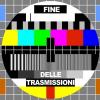Dear Children’s Eye Care Providers,
First off, thank you! Thank you for you devoting your time and energy and career to the care of our children’s vision. Our children’s eyes and their vision are so very important to us and to them, and we truly appreciate your expertise and your care and your help. We know that you want our children to see as well as they can, and we want the same thing.
Please help us to understand our children’s vision and their vision problems. I know you studied the visual system and eyes, not how to calm a freaked out parent, and I know that we are not always easy to deal with (and especially after eye drops, our children aren’t always the easiest either). But we know that glasses and patches and eye drops and vision therapy and other treatments work best when they’re done as directed. But it can be hard to follow through, especially if we don’t understand what’s happening with our children’s eyes, or don’t understand why they need the treatments you prescribed.
Unless you have or had a young child with glasses or patches, you probably don’t know just how many strangers approach us to talk about our children’s vision. It would astound you the number of comments and questions we field. Many of them are from well-meaning and curious people, but we all have had our share of strangers (and sometimes friends and family) questioning the need for our child to wear glasses, and stating outright that we are harming our child’s vision by doing this. There is not a good understanding of the importance of early diagnosis and treatment of childrens’ vision issues. And that’s a real shame, given their prevalence! And us parents who have children in glasses? We’re the best ambassadors for raising awareness and understand. But only if we understand the issues and why treatment is important! When we understand what’s going on, we can reach a lot of parents and grandparents and others and explain why it’s so important that a child’s vision be corrected if need be. But when things aren’t clear, then those questions, even the well-intentioned ones wondering how on earth you can check a baby’s vision, raise doubts in our minds about whether it really is such a good idea to go ahead with glasses, or patches, or contacts, or what not.
Please know that turning to the Internet to learn more about our child’s condition and treatment is not necessarily a sign that we don’t trust you. Even if you have explained everything as well as possible, there will be questions that you probably can’t help with. Things like how to deal with a glasses on a toddler throwing a temper tantrum, or how to explain patching to an older sibling or teacher. And even if you explained it perfectly, chances are, we were freaked out when you told us, or our child was crying, or very likely both. The Internet can be a huge source of information, support and help for us, especially since many of us do not know other parents whose children have vision issues, and sadly, many of us are scared to ask you.
Also know that many of the treatments for vision issues – glasses, contacts, patches – are not covered by insurance, at least not in the US. While none of us would ever put a price on giving our child the best vision possible, these treatments can be a huge financial strain, and that can lead to a lot of stress for us as we’re facing not just how to get our child to wear glasses, but also how to afford them (and quite likely, how to afford a second pair when the first one is broken or outgrown). I know that you can’t fix those issues, but you can be sensitive to how much it can stress us, and if you have information on resources for financial assistance, or places to purchase glasses that are not expensive, that helps!
I know I often get too wordy, so I’ll summarize the things that you can do to help us parents:
Explain the tests. The tests often seem like they’re doing nothing. Just simply letting us know that you’re looking at the shape of the eye, or looking to see the range of eye motion helps.
Explain the diagnosis. If you have information that we can take home to read when we have the time to absorb it, so much the better.
Explain the treatment. Which eye needs patching? How long should the glasses be worn? When would I need to bring my child in next?
If there are places you recommend going to for support or more information, pass them along!
Be sensitive to the financial stress this may cause. Pass along any finance assistance information, or sources for glasses that you can recommend.
Answer our questions. Even if you already covered it, or it seems like a stupid question, it’s very likely we’ll get the same question from a nosy stranger. And we need to understand.
And thank you again for caring for our children and their eyes and their vision! We will do whatever it takes to ensure our children see as well as possible. I would also welcome input from any children’s eye care providers about what we as parents can do to help you.
Your partner in helping our children to see,
Ann Z, Little Four Eyes
















